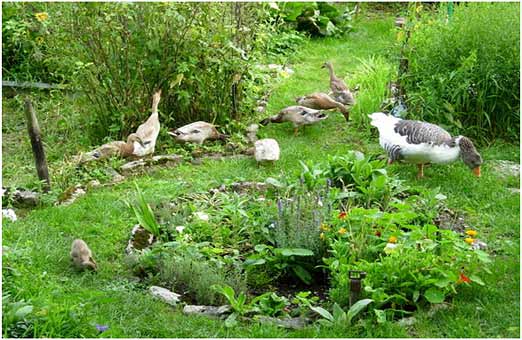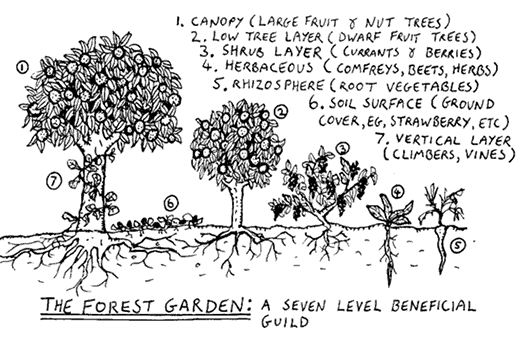"..A self sufficient community centre for educative turism..."

www.autosustainable.org
Permaculture
Permaculture is an approach to designing human settlements and agricultural systems that mimic the relationships found in natural ecologies.
Permaculture as a system was developed by the Australian scientists Bill Mollison and David Holmgren and their associates during the 1970s and published thereafter.
The word permaculture comes from permanent agriculture.
The intent is that, by training individuals in a core set of design principles, those individuals can design their own environment and build increasingly self-sufficient human settlements — ones that reduce society's reliance on industrial systems of production and distribution that Mollison identified as fundamentally and systematically destroying Earth's ecosystems.
While originating as an agro-ecological design theory, permaculture has developed a large international following. This "permaculture community" continues to expand on the original ideas, integrating a range of ideas of alternative culture, through a network of publications, permaculture gardens, intentional communities, training programs, and internet forums. In this way, permaculture has become a form of architecture of nature and ecology as well as an informal institution of alternative social ideals.
Permaculture principles draw heavily on the practical application of ecological theory to analyze the characteristics and potential relationships between design elements. Each element of a design is carefully analyzed in terms of its needs, outputs, and properties. For example chickens need water, moderated microclimate and food, producing meat, eggs, and feathers as well as manure which can help break up hard soil .

An example of permaculture utilizing animals and gardens.
Design elements are then assembled in relation to one another so that the products of one element feed the needs of adjacent elements. Synergy between design elements is achieved while minimizing waste and the demand for human labor or energy. Exemplary permaculture designs evolve over time, and can become extremely complex mosaics of conventional and inventive cultural systems that produce a high density of food and materials with minimal input.
Stacking or layers in a forest garden.
In permaculture and forest gardening, seven layers are identified. This way diferent kind of plants and trees will grow mixed together, like in a forest. This will create it’s own eco-system which is optimal for the ground and ground water.
|
These 7 layers are:
1. The canopy |
A mature ecosystem such as ancient woodland has a huge number of relationships between its component parts: trees, understory, ground cover, soil, fungi, insects and other animals. Plants grow at different heights. This allows a diverse community of life to grow in a relatively small space. Plants come into leaf and fruit at different times of year.
Layering in a temperate garden, Mount Kembla for example, in the UK, wild garlic comes into leaf on the woodland floor in the time before the top canopy reappears with the spring. A wood suffers very little soil erosion, as there are always roots in the soil. It offers a habitat to a wide variety of animal life, which the plants rely on for pollination and seed distribution.
The productivity of such a forest, in terms of how much new growth it produces, exceeds that of the most productive wheat field. It is in this observation — of how much more productive a wood may be on far less fertilizer input — that the potential productivity of a permaculture design is modeled. The many connections in a wood contribute together to a proliferation of opportunities for amplifier feedback to evolve that in turn maximize energy flow through the system.
Permaculture is a broad-based and holistic approach that has many applications to all aspects of life. At the heart of permaculture design and practice is a fundamental set of ‘core values’ or ethics which remain constant whatever a person's situation, whether they are creating systems for town planning or trade; whether the land they care for is only a windowbox or an entire forest. These 'ethics' are often summarized as;
- Earthcare – recognising that Earth is the source of all life (and is possibly itself a living entity — see Gaia theory), that Earth is our valuable home, and that we are a part of Earth, not apart from it.
- Peoplecare – supporting and helping each other to change to ways of living that do not harm ourselves or the planet, and to develop healthy societies.
- Fairshare (or placing limits on consumption) - ensuring that Earth's limited resources are used in ways that are equitable and wise.
Modern thought about permaculture began with the issue of sustainable food production. It started with the belief that for people to feed themselves sustainably, they need to move away from reliance on industrialized agriculture. Where industrial farms use technology powered by fossil fuels (such as gasoline, diesel and natural gas), and each farm specializes in producing high yields of a single crop, permaculture stresses the value of low inputs and diverse crops. The model for this was an abundance of small-scale market and home gardens for food production, and a main issue was food miles.
